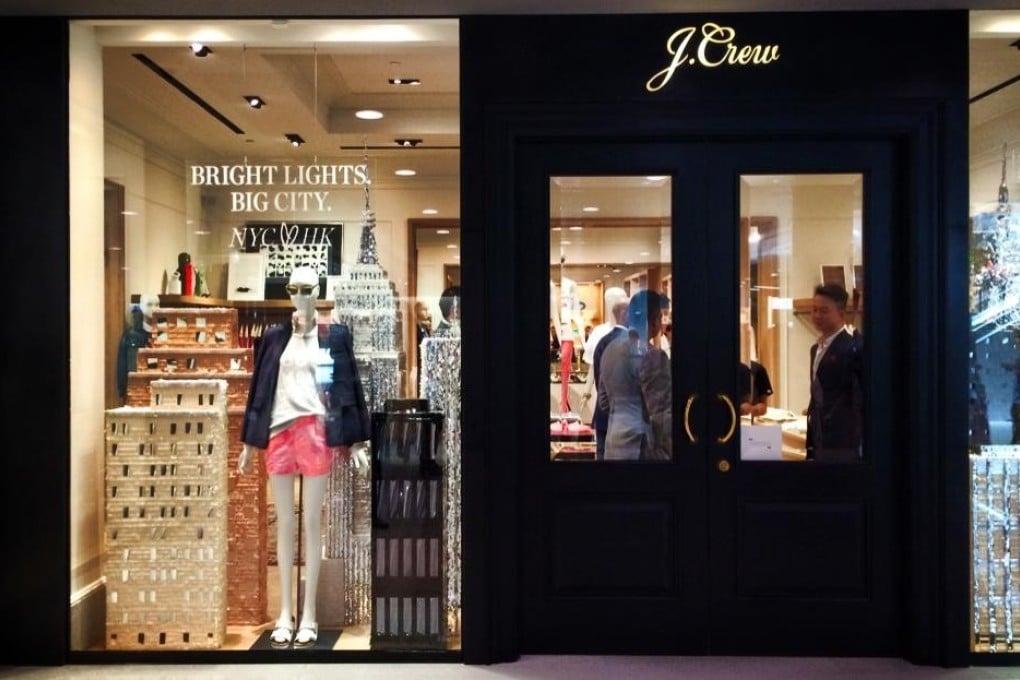
Back in the 80s and 90s, the J. Crew mail order catalogue was as ubiquitous as the Sony Discman and beanie babies on college campuses across America. My freshman year roommate used to order button-down shirts and khaki pants over the phone twice a semester. The brand experienced a steady decline in the late 1990s, until CEO Millard Drexler (former chief of Gap Inc.) began to turn the company around in 2003, reinvigorating both the catalogue and brick-and-mortar stores with a colourful selection of “luxury basics.” A decade later, J. Crew is once again the brand de rigueur for preppy smart casual and spunky accessories. Among its best known clients are Michelle Obama and her two daughters.
Following in the footsteps of Forever 21, Abercrombie & Fitch, Gap and Victoria’s Secret, J. Crew made landfall in Hong Kong six weeks ago. It was part of its “Hello, World!” campaign to expand outside North America. But it wasn’t the brand’s first foray in Asia. J. Crew entered Japan in 1993 and pulled out in 2008 due to lacklustre sales. Its high-profile comeback to the region merely six years after a painful Japanese retreat marks the company's faith in the gargantuan Chinese market and, according to the CEO, there was no better place to start than Hong Kong. It sure made us feel special.
Drexler must have been sticker-shocked when he first heard how much retail space cost here. Shock quickly gave way to disbelief, as he found out not only that his Asian flagship would be one fifth the size of its U.S. counterparts, but that the women’s and the men’s stores would be half a mile apart. So while the girls would be shopping at the glitzy IFC Mall (where McDonald’s used to be), the boys would be looking up On Lan Street on Google Map and wandering up and down Lan Kwai Fong trying to find it. But the CEO was in such a hurry to return to Asia that he pressed ahead anyway, because he believes fortune always favours the bold.

Then there is the price point. A pair of women’s shoes costs over HK$3,200 and a regular men’s cotton shirt costs HK$780. To those who aren't familiar with J. Crew, their natural curiosity will lure them into the store but the price tags will chase them right out, for their money is better spent on fancier European labels. To those who are loyal to the brand, on the other hand, they can save 30% simply by ordering from the U.S. website or, in my case, raid the sale rack on my next trip to the U.S. I have roughly 15 J. Crew gingham shirts in my closet, all purchased on sale and each cost less than HK$200. Despite the repeated charm offensives in Hong Kong (beautiful models were handing out free chocolates and cookies at the IFC Mall), it will take a lot more than freebies to win over value-conscious shoppers here. In fact, I have yet to see someone carrying a J. Crew shopping bag in Central.
No amount of rave reviews by fashion bloggers and lifestyle reporters can mask the fact that J. Crew has botched its Hong Kong entry. Had the brand done more market research or waited for a more suitable retail space, it could have been a better contender in, and a more welcome addition to, the already over-crowded leisurewear sector. Instead, it rushed into the new market and planted a flag on the first empty space it saw. Drexler may have been too ambitious and impatient for his own good. But perhaps the rush to go global has less to do with the CEO’s own personal ambition than his shareholders’ wish to make the company more attractive to private equity investors. Rumours have been swirling about an IPO later this year. That explains why Drexler has gone out of his way to blab about opening six more stores in Hong Kong and hinted not so subtly that Shanghai and Sydney are next on the agenda. In the end, J. Crew's decision to come to Hong Kong boils down to the simple reality that the company needs a growth story for Wall Street. Suddenly, we don’t feel so special any more.
